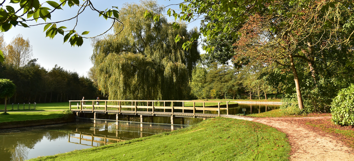
Legacy -- The Generative Way
It happened during the "Me Decade," a time when calls to "self-fulfillment" and "self-actualization" filled the air. The 1970s. I was in my thirties then, wondering about the wisdom of investing so much in a self that was going to die. I wanted to know what would go beyond Me.
So I turned to a word coined by the psychoanalyst Erik Erikson, but about which he said little: generativity. In articles entitled "Generative Humanity" and "Religion, Psychology and the Sterile Self" I asked readers to think about fertility in a broad, even spiritual, sense. In a book called Outliving the Self I told the stories of eight people trying to make their lives matter. A ten-year retrospective appeared in the Journal of Aging Studies.
Later, in Make It Count, I laid out a generative "Way," arranging stories--from life, from research, from spiritual sources--into a kind of path. An overview came in an address I delivered in Kyoto's Daikaku-ji Temple. Another presentation in Kyoto asked "What Makes a Culture Generative?" Then came "Generativity and the Gift of Meaning," a little piece that interprets an elder tale from India.
Now, entering my eighties, I travel lightly, carrying only distillations. I believe ...
• That, in order to create for the future, we have to talk to the past. It can be difficult: the fish is the last to discover the water.
• That curses, as well as blessings, come down the generational chain.
• That people stand up to such curses. They absorb the damage, bear the scars, but let it go no further. They are "intergenerational buffers."
• That calls to create come from deep within our nature. They also come knocking at our door, interrupting everything.
• That good come mixed with bad. Sow one, you will sow the other.
• That nothing is too small to leave behind. Even a smile can save a life.
• That we see little of what we actually do leave behind.
• That what we call our legacy was never ours in the first place. Ask Ozymandias about building a statue to yourself.
• That, as we near the end, we need to see what's rising up, sown by whomever. Our witness is its sunlight, our job to call it forth.
• That seeds remain viable for centuries, even millennia. An Arctic flower grew after 32,000 years.
• That faith in a Transcendent is required from the beginning to the end of the generative process. Some say faith is illusory. I say put it in the drinking water.
